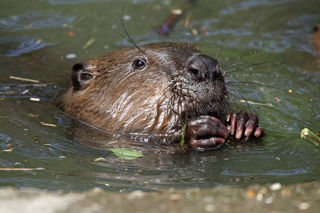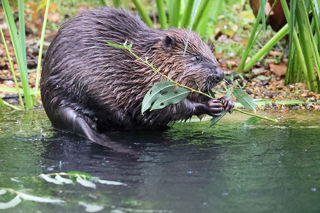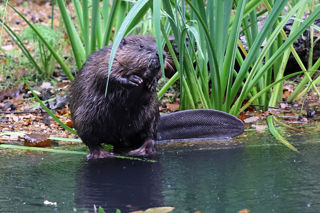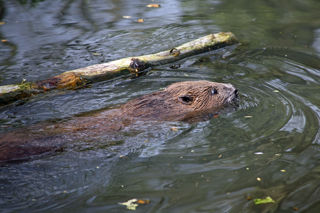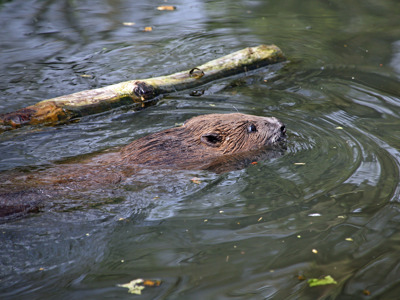
Conservation spotlight - Beaver
25th Nov 2020
Species: Eurasian beaver
Looks
The Eurasian beaver is the world’s second largest rodent, weighing between 11 and 30 kg, with a body length around 80-100 cm plus 25-50cm of tail. Beavers are easily recognisable by their brown fur, the characteristic tail and their large orange teeth.
The Eurasian beaver has a relative in the American beaver, but they are slightly different in appearance.
Habitat (living spaces)
Wetlands, streams and lakes, situated next to woodland. Beavers are strictly vegetarian, living off tree shoots, roots, stems and leaves.
Status in the UK
The beaver is considered to be endangered in the UK and critically endangered in England on the IUCN red list*.
The Eurasian beaver is native to Britain and used to be widespread in England, Wales and Scotland. Sadly the species was hunted to extinction in Britain between 300 and 400 years ago for its fur, meat and glands, which produced a sought-after oil.
A restored wild beaver population of approximately 400 animals in the UK is a result of carefully monitored trial releases by wildlife organisations and escapes from enclosures. Following a successful Scottish Beaver Trial, beavers were given European Protected Species Status by the Scottish Government in 2019.
In England the status of the beaver is under review following a five year study of the only licensed population of free-living beavers on the River Otter in Devon.
The beaver is lacking enough healthy wetlands and rivers for the population to thrive and the draining and pollution of wetlands is a common problem.
Importance for nature
The beaver is considered a keystone species, meaning it has a positive impact on the whole ecosystem surrounding it. Where beavers thrive the wetlands around them thrive and wildlife can flourish where beavers live, because their dams and lodges create new habitats for many species.
Beavers cut down trees along the river banks for food and materials for building. This action opens up bank side habitat and lets in light, encouraging small flowering, sun loving plants. This attracts insects and other invertebrates which provides a greater abundance of food for birds and mammals, such as the water vole.
Beaver dams and lodges also help filter out pollutants in the water, leaving better ecosystems for fish and other water creatures. Beaver dams can even help slow down floods.
Wildwood’s work
Wildwood has worked with beavers for over 20 years, informing the public of the importance of these amazing ecosystem engineers and breeding beavers with the aim of releasing healthy young into the wild as part of monitored trials.
Beavers have been missing from our landscapes for centuries, but research has shown that if we bring them back they can not only help wildlife thrive, but also lessen the impacts of climate change.
*The IUCN red list is an indicator list showing the conservation status of most wildlife on earth. Species can be classified as Least Concern (LC), Near Threatened (NT), Vulnerable (VU), Endangered (EN), Critically Endangered (CR), Extinct In The Wild (EW), Extinct (EX)

